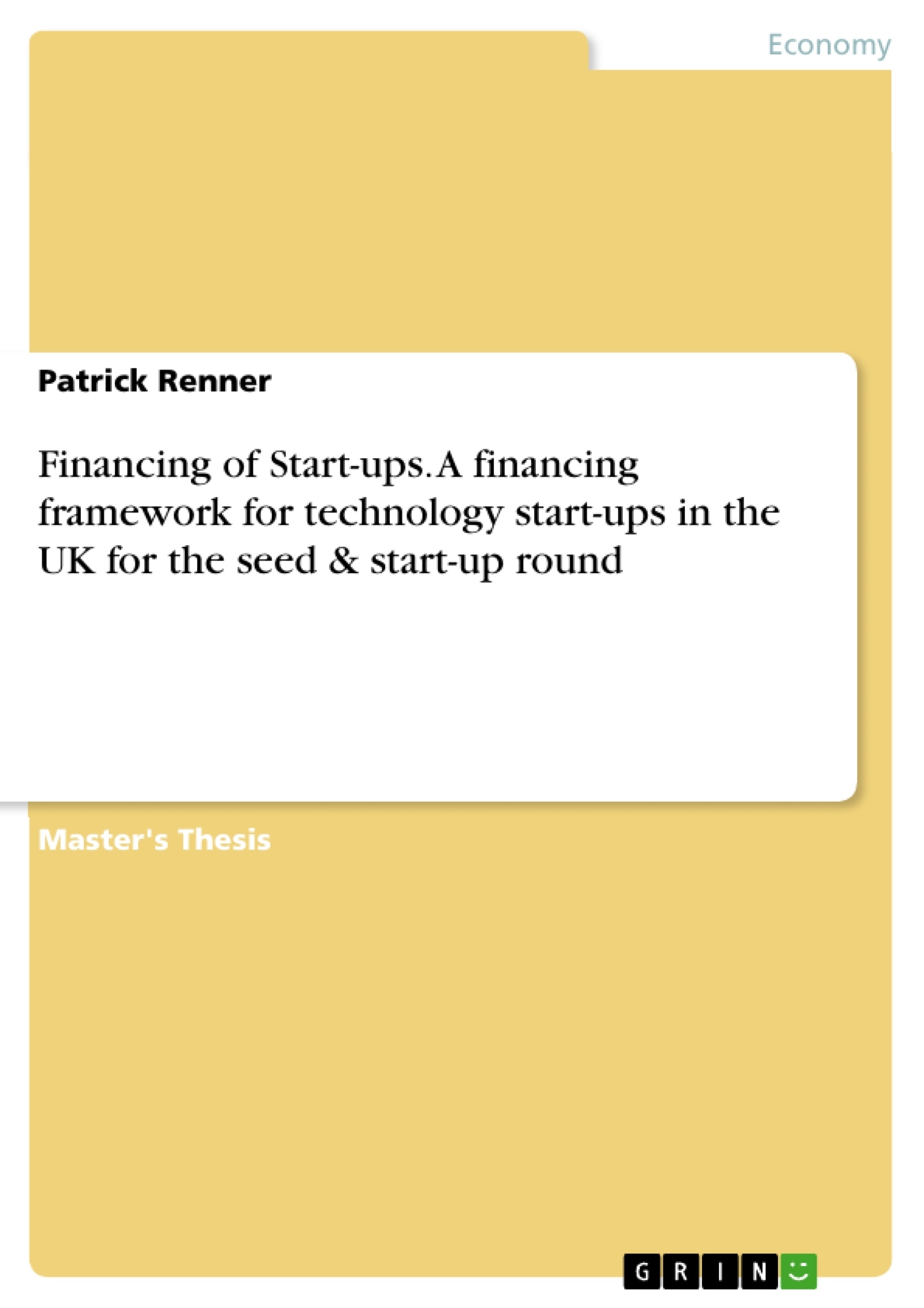Young businesses, especially in the technology sector, are the backbone in facilitating the creation of innovative new ventures as well as strengthen the development of existing organizations and as a result, increasing national economic growth. One of the most important decisions the founders of these technology start-ups have to make is the financial one. With new emerged sources of funding, this decision gets even more complex and old guidelines are not very helpful anymore. The new introduced financial framework, which is based on the financial decisions of four case companies will assist entrepreneurs when it comes to the question where capital can be found and which source of funding is the most suitable one for his or her venture.
Table of Content
1. Introduction
1.1. Background & Problem formulation
1.2. Purpose & Research Question
1.3. Limitations
1.4. Structure
2. Literature Review
2.1. Theoretical background
2.1.1. Stages of financial need
2.1.2. Most common financing options
2.2. Empirical evidence
2.3. DTI Framework
3. Methodology
3.1. Research Design
3.2. Collection of data
3.2.1. Secondary empiric data - Case study approach
3.2.2. Secondary empiric data – Brief introduction to the case studies
3.2.3. Secondary empiric data – How the case studies are analysed?
3.2.4. Secondary empiric data – Scientific literature
3.3. Verification and generalization of empirical data
3.3.1. Validity
3.3.2. Reliability
3.4. Generalisation of Case Studies
4. Research Findings & Discussion
4.1. Just Park
4.2. Landbay
4.3. Kano Computing
4.4. Dojo Limited
4.5. Discussion
4.5.1. External funds really needed?
4.5.2. Is a grant a possibility?
4.5.3. High-class management team or early traction?
4.5.4. Is your business able to create momentum?
4.5.5. Is your business in a high growth sector?
4.5.6. Are you willing to share control?
4.5.7. Do you not only need money?
4.5.8. Do you have the securities to get a bank loan or overdraft?
4.6. Outcome: The Financing Framework
4.7. Further remarks
5. Conclusion
5.1. Which kind of financing is needed in the different stages of a start-up business?
5.2. What sources of funds are available for technology start-ups?
5.3. What sources of funds are used in the real world?
5.4. How to improve an existing financing framework to make decision making easier?
5.5. Limitations
5.6. Final remarks
Bibliography
- Quote paper
- Patrick Renner (Author), 2015, Financing of Start-ups. A financing framework for technology start-ups in the UK for the seed & start-up round, Munich, GRIN Verlag, https://www.grin.com/document/451790
-

-

-

-
Upload your own papers! Earn money and win an iPhone X. -

-
Upload your own papers! Earn money and win an iPhone X. -

-
Upload your own papers! Earn money and win an iPhone X. -

-
Upload your own papers! Earn money and win an iPhone X. -

-
Upload your own papers! Earn money and win an iPhone X. -

-
Upload your own papers! Earn money and win an iPhone X. -

-
Upload your own papers! Earn money and win an iPhone X. -

-
Upload your own papers! Earn money and win an iPhone X. -

-
Upload your own papers! Earn money and win an iPhone X. -

-
Upload your own papers! Earn money and win an iPhone X. -

-
Upload your own papers! Earn money and win an iPhone X.

